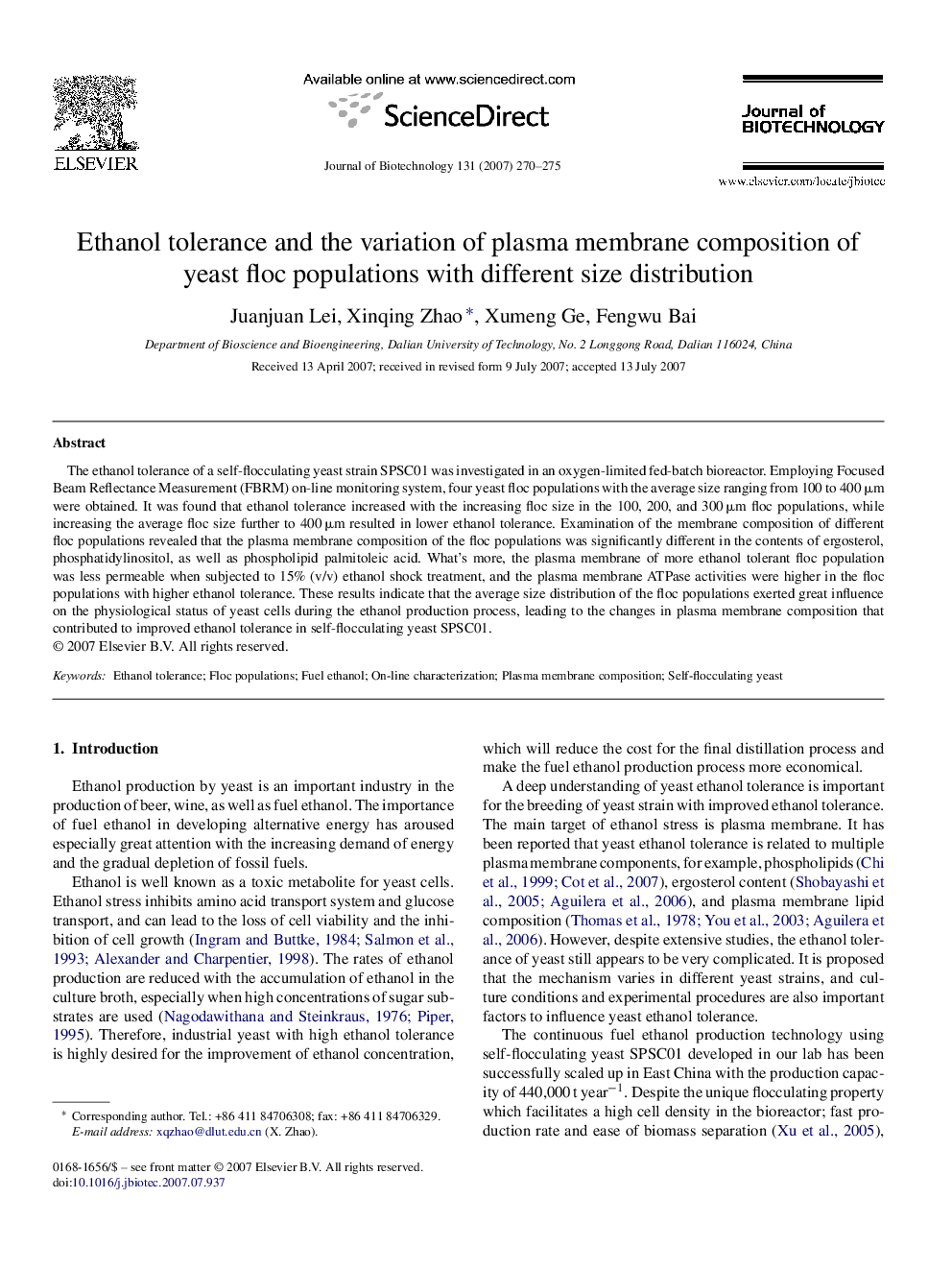| Article ID | Journal | Published Year | Pages | File Type |
|---|---|---|---|---|
| 25173 | Journal of Biotechnology | 2007 | 6 Pages |
The ethanol tolerance of a self-flocculating yeast strain SPSC01 was investigated in an oxygen-limited fed-batch bioreactor. Employing Focused Beam Reflectance Measurement (FBRM) on-line monitoring system, four yeast floc populations with the average size ranging from 100 to 400 μm were obtained. It was found that ethanol tolerance increased with the increasing floc size in the 100, 200, and 300 μm floc populations, while increasing the average floc size further to 400 μm resulted in lower ethanol tolerance. Examination of the membrane composition of different floc populations revealed that the plasma membrane composition of the floc populations was significantly different in the contents of ergosterol, phosphatidylinositol, as well as phospholipid palmitoleic acid. What's more, the plasma membrane of more ethanol tolerant floc population was less permeable when subjected to 15% (v/v) ethanol shock treatment, and the plasma membrane ATPase activities were higher in the floc populations with higher ethanol tolerance. These results indicate that the average size distribution of the floc populations exerted great influence on the physiological status of yeast cells during the ethanol production process, leading to the changes in plasma membrane composition that contributed to improved ethanol tolerance in self-flocculating yeast SPSC01.
